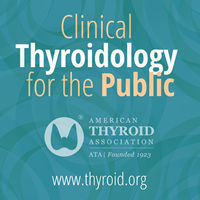Publication date: October 2018
Source: Annales de Dermatologie et de Vénéréologie, Volume 145, Issue 10
Author(s): D. Pourchot, C. Chiaverini, E. Bourrat, S. Barbarot, P. Vabres, T. Hubiche, C. Droicourt, M. Piram, I. Kupfer-Bessaguet, M. Ferneiny, E. Puzenat, X. Balguérie, A. Beauchet, A.-C. Bursztejn, E. Mahé, Groupe de recherche de la Société française de dermatologie pédiatrique
Summary
Background
Little information is available on the prevalence and clinical aspects of tongue involvement in children with psoriasis. The aim was to evaluate the prevalence, clinical aspects and risk factors concerning tongue involvement in children with psoriasis.
Patients and methods
This study was carried out in two stages. We performed a multicentre, cross-sectional study in 23 French dermatology centers. All children seen for psoriasis during the one-year study were systematically included. The clinical features of the tongue and of psoriasis were recorded. Association with clinical aspects of psoriasis and comorbidities was evaluated. We then carried out a literature review to evaluate the prevalence of tongue involvement in children with psoriasis and its positive predictive value for psoriasis. A search was conducted in the PUBMED database using the following keywords: "child" and "psoriasis" and ("tongue" or "glossitis" or "migratory glossitis" or "benign migratory glossitis" or "geographic tongue" or "fissured tongue").
Results
7.7% of the 313 children with psoriasis had tongue involvement. The clinical aspects were geographic tongue (4.2%), fissured tongue (2.8%) and both (0.64%). There was no association between tongue involvement and the clinical characteristics of the children. Two hundred and ninety-five articles were referenced and 3 were analysed. Psoriasis is very rare in cases of tongue abnormalities.
Conclusion
The prevalence of tongue involvement was 7.7% in children with psoriasis. No clinical or epidemiological association was shown. Tongue involvement does not modify the management of psoriasis. In the literature review it was not possible to evaluate either the prevalence of tongue involvement in psoriasis or the positive predictive value thereof.
Résumé
Introduction
Il y a peu d'informations dans la littérature sur les atteintes de la langue au cours du psoriasis de l'enfant. L'objectif était d'évaluer la fréquence, les aspects cliniques et les facteurs de risque d'atteinte linguale chez les enfants psoriasiques.
Patients et méthodes
Ce travail a été effectué en deux étapes : (1) une étude transversale a été menée dans 23 centres dermatologiques français, notant les aspects cliniques de la langue et du psoriasis chez les enfants atteints de psoriasis, ainsi que les associations et les comorbidités ; (2) une revue systématique de la littérature a ensuite été effectuée afin d'évaluer la prévalence l'atteinte linguale chez l'enfant et sa valeur prédictive du psoriasis. Une recherche a été réalisée en interrogeant la base de données PUBMED. Les mots clés saisis étaient : « child » et « psoriasis » et (« tongue » ou « glossitis » ou « migratory glossitis » ou « benign migratory glossitis » ou « geographic tongue » ou « fissured tongue »).
Résultats
(1) Parmi 313 enfants atteints de psoriasis 7,7 % présentaient une atteinte linguale sous forme de langue géographique (4,2 %), langue fissurée (2,8 %) ou les deux (0,6 %). L'atteinte linguale n'était associée à aucune particularité démographique ou clinique, ni aucune comorbidité. (2) Parmi 295 articles référencés, 3 ont finalement été retenus. Le psoriasis reste très rare en cas d'anomalie linguale.
Conclusion
La prévalence de l'atteinte linguale chez les enfants psoriasiques était de 7,7 %. Aucune association clinique ou épidémiologique n'a été montrée. L'atteinte linguale ne modifie pas la prise en charge du psoriasis. La revue systématique de la littérature ne permettait pas d'évaluer une prévalence de l'atteinte linguale dans le psoriasis ni la valeur prédictive positive de cette atteinte.
https://ift.tt/2zNYgTG















